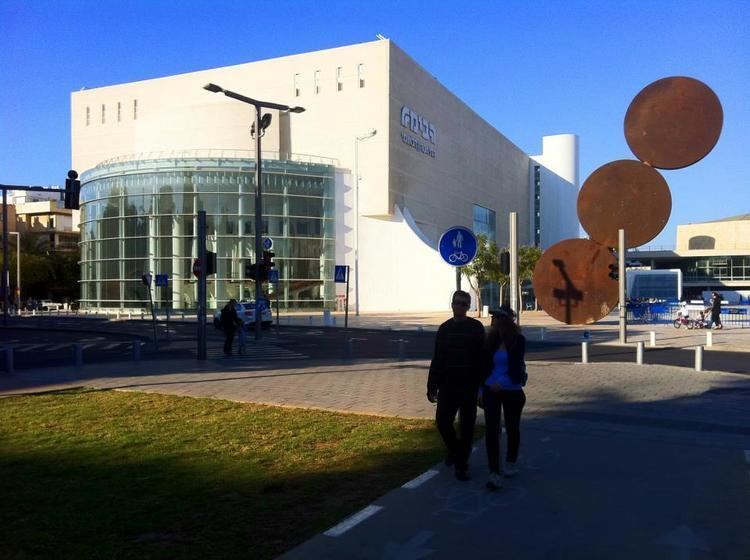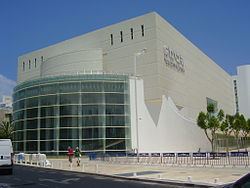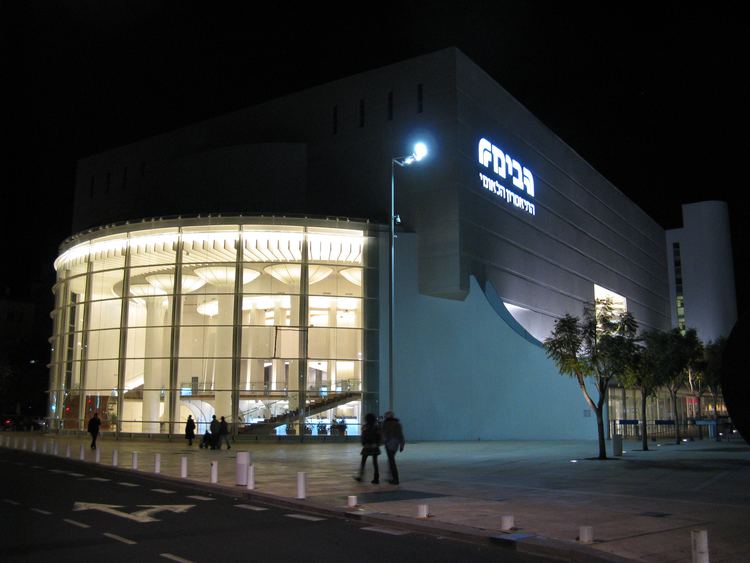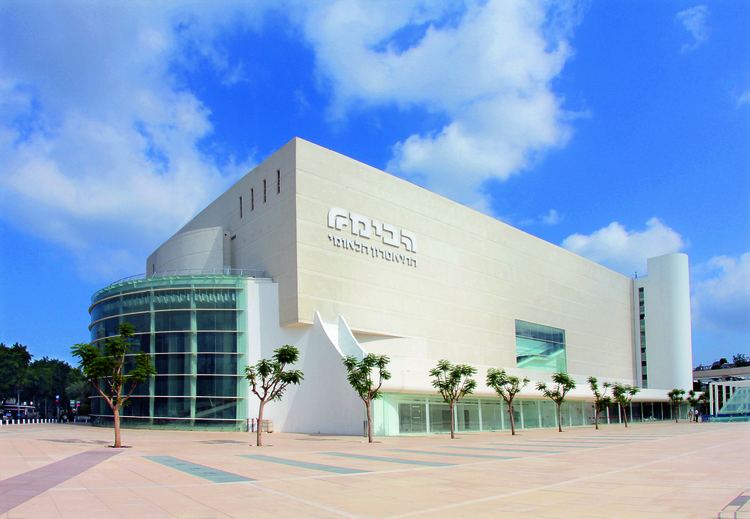Founder Nachum Zemach | ||
 | ||
Similar Profiles | ||
Cnn spotlight jerry s habima theatre
The Habima Theatre (תיאטרון הבימה - Teat'ron HaBima, lit. "The Stage Theatre") is the national theatre of Israel and one of the first Hebrew language theatres. It is located in Habima Square in the center of Tel Aviv.
Contents
- Cnn spotlight jerry s habima theatre
- Wxia channel 11 jerry s habima theatre s the wizard of oz
- History
- International tour
- Lodz Impact
- Establishment in Palestine
- National Theatre of Israel
- Restoration
- Other theaters
- References
Wxia channel 11 jerry s habima theatre s the wizard of oz
History

Habima was founded by Nahum Zemach in Białystok (then in Grodno Governorate, Russia) in 1912. Menahem Gnessin was one of its cofounders and early actors. Because its performances were in Hebrew and it dealt with issues of the Jewish people, it met with persecution by the Czarist government. Beginning in 1918, it operated under the auspices of the Moscow Art Theatre, which some consider its true beginning. It encountered difficulties under the Soviet government as well after the Russian Revolution. Stanislavski arranged for the mainly Jewish Polish actors to be trained by Yevgeny Vakhtangov. The People's Commissar for Nationalities Affairs, Joseph Stalin, also authorized the theatre's creation.
International tour

In 1926, the theatre left the Soviet Union to tour abroad, including in the United States. Zemach and some actors stayed in New York City, where their productions had met with success. Their productions included plays from the Jewish folk tradition, and they were performed in Hebrew. The company split up, with some members choosing to stay in New York.
Lodz Impact

The theatre visited Lodz pre-war and the photographer and artist Mendel Grossman photographed the actors and actresses from the wings. His life was changed as a result of the visit of the theatre.
Establishment in Palestine

Other members of the theatre took the company to Mandate Palestine in 1928. At that time the Habima Players invited director Aleksei Dikiy from the Moscow Art Theatre to help them. Dikiy directed two successful plays for Habima: one was Der Oytser (The Treasure), a play in Yiddish by Sholom Aleichem, which premiered on December 29, 1928. The second was The Crown, a play by David Calderon that premiered on May 23, 1929 in Tel Aviv. With the success of Dikiy's directorship in the season of 1928/29, Habima gained reputation as a national Jewish theatre with a permanent repertoire and stage in Tel Aviv.

The image of actress Hana Rovina starring as Leah in the historical Habima production of S. Ansky's The Dybbuk (performed by Habima in the Hebrew-language translation by Hayyim Nahman Bialik) is a cultural icon that to many represents Jewish and Israeli theatre.
In 1945, the company built a theatre in Tel Aviv, which it occupied before completion.
National Theatre of Israel

Habima has been officially considered the national theatre of Israel since 1958, the year in which it received the Israel Prize for theatre. This was the first year in which the Prize was awarded to an organization. In the 21st century, Habima employs 80 actors, and another 120 staff members work at the complex.
Restoration

In January 2012, the theatre reopened after four and a half years of renovations. Architect Ram Karmi was commissioned to redesign the historic building. More than NIS 100 million was invested in the makeover, which has added 500 square meters of floor space and three new rehearsal rooms. The building's four auditoriums were completely rebuilt. Each is a different size and color: Rovina is blue and seats 930 people; Meskin is lavender and seats 320; Bertonov (also known as Bamartef) is green and seats 220; and Habima 4 (formerly known as Heineken) is wood panelled and seats 170.
